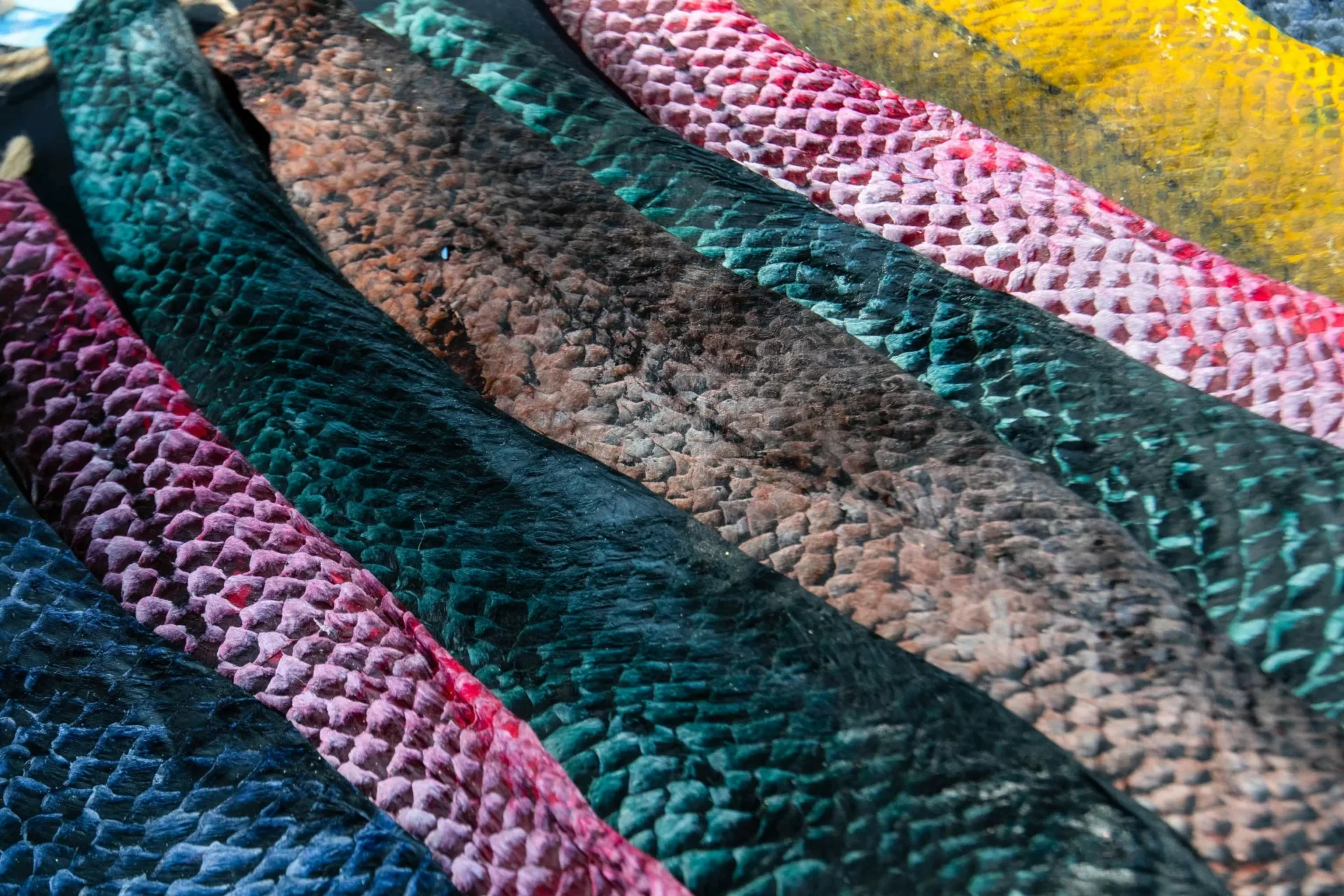On a picturesque beach in Costa Rica, as the sun sets and fishermen unload the day’s catch, two women can be found hard at work. With skilled hands, they carefully rub, scrape, wash and tan the slimy skin of a sea bass, a routine they have perfected over the years. It may seem like a mundane task, but these women are playing an important role in preserving an ancient tradition and creating sustainable livelihoods for their community.
Costa Rica, with its crystal clear waters and lush landscapes, has long been a favorite tourist destination. But beyond the tropical paradise lies a rich cultural heritage, deeply rooted in traditions that have been passed down through generations. One such tradition is the art of making leather from fish skins, a practice that dates back to pre-Columbian times.
The sea bass, a staple catch for the local fishermen, is not just a source of food but also a valuable resource for these women. As the fishermen bring in their haul, the women eagerly wait to collect the discarded skins. In the past, these skins would have been thrown away as waste, but now they hold great value. With their skilled hands and knowledge of traditional tanning methods, the women transform these discarded skins into beautiful leather products.
The process of turning fish skins into leather is an arduous one and requires great skill and patience. First, the skin is scraped and cleaned of any excess flesh and scales. It is then soaked in a solution of water and salt, a technique known as “pickle curing”, to preserve it. Once cured, the skin is washed and stretched onto a wooden frame, ready to be de-haired. At this stage, the women use a mixture of lime and water to loosen the hair, which is then carefully scraped off. It is a messy and tiring job, but the women do it with precision and care.
After the hair has been removed, the skin is treated with vegetable substances like tree bark and fruits for tanning. This process, known as “vegetable tanning”, gives the leather a soft and supple quality. It is an age-old technique, passed down through generations, and the women take great pride in keeping this tradition alive. As they work, they share stories and laughter, making the process a communal and enjoyable experience.
The end result of their hard work is a beautiful, durable and sustainable leather, ready to be transformed into a variety of products. Bags, belts, wallets, and even shoes are just a few examples of the items the women create. Each piece is unique, and the natural patterns and colors of the fish skin make it even more special.
Apart from preserving their cultural heritage, the production of fish leather also has a significant impact on the community. By utilizing a previously discarded resource, the women are promoting sustainability and reducing waste. In a time when environmental awareness is crucial, these women are setting an example by creating eco-friendly products.
Moreover, the fish leather industry has provided economic opportunities for the women in the community. In a male-dominated fishing industry, this has given them a chance to be financially independent and support their families. It has also empowered them, giving them a sense of purpose and pride in their work. The local economy has also benefited as these unique handcrafted products are sold to tourists, adding to the country’s economy.
As the world becomes more industrialized, traditional practices like fish leather tanning are slowly dying out. However, thanks to the dedication and hard work of these women, this ancient art remains alive and thriving on the beaches of Costa Rica. Not only are they preserving their culture, but they are also contributing to sustainable tourism and promoting environmental awareness.
In conclusion, the two women on the beach in Costa Rica, working tirelessly on a slimy sea bass skin, represent more than just a traditional craft. They are a symbol of resilience, sustainability, and empowerment. Their dedication and passion for their work are an inspiration, and their beautiful leather products are a reflection of their skills and the beauty of Costa Rica’s rich cultural heritage. So the next time you see a fish leather product, remember the sea bass, the fishermen, and the hardworking women who made it all possible.

